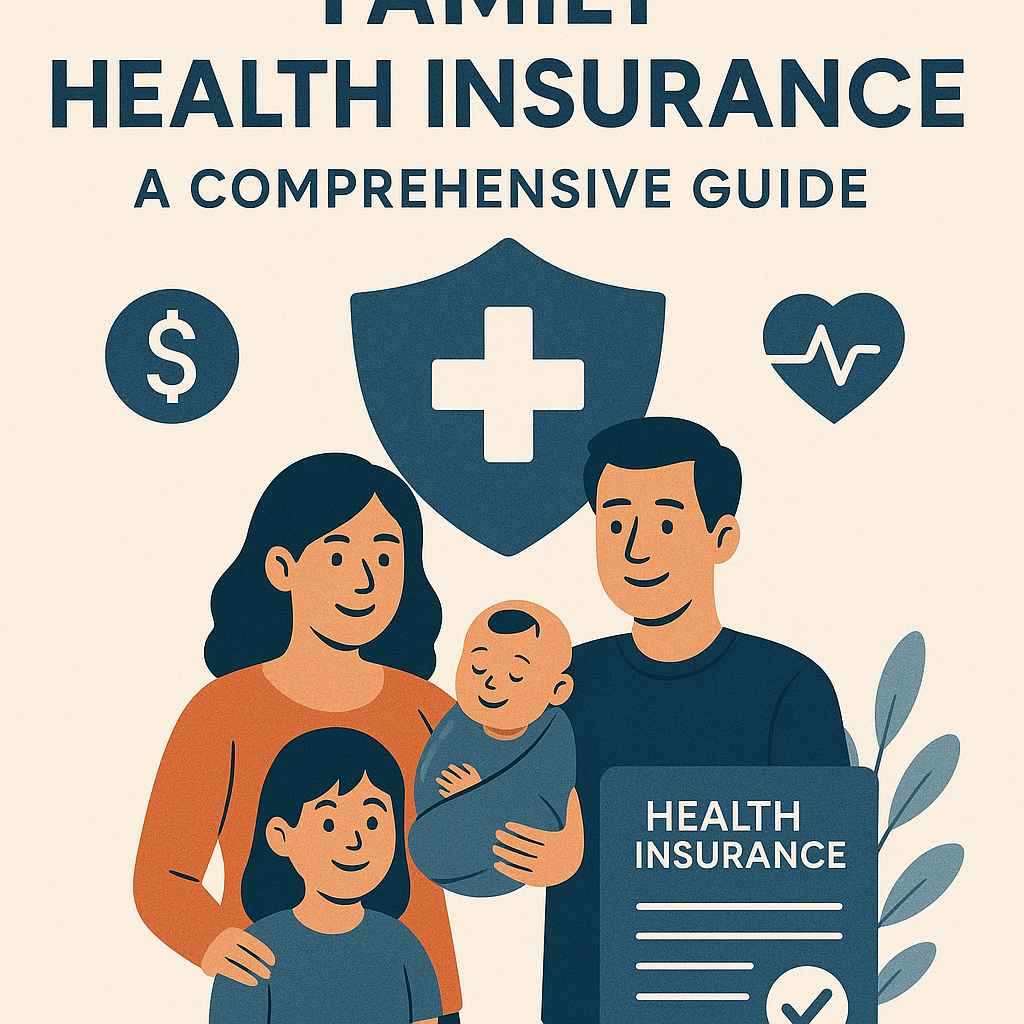Introduction
Family health insurance covers medical expenses for all members under one policy, ensuring financial security and peace of mind amid rising healthcare costs.
What Is Family Health Insurance?
Family health insurance is a type of medical insurance that covers multiple family members under a single plan. Instead of purchasing individual policies for each person, a family policy provides collective coverage, usually at a lower cost than buying separate plans.
Importance of Family Health Insurance
- Cost-Effective Coverage: One policy for the entire family reduces premium costs.
- Financial Security: Covers unexpected medical expenses, reducing financial strain.
- Access to Quality Healthcare: Ensures family members receive timely and necessary medical treatments.
- Customizable Plans: Policies can be tailored to include maternity benefits, pediatric care, and senior health coverage.
Key Aspects of Family Health Insurance
1. Coverage Options
- Basic Health Plans: Cover essential medical services.
- Comprehensive Plans: Include hospitalization, outpatient care, and preventive services.
- Maternity and Childcare Plans: Offer coverage for pregnancy, newborn care, and vaccinations.
- Senior Citizen Coverage: Provides additional healthcare benefits for elderly family members.
2. Premiums, Deductibles, and Co-Payments
- Premium: Monthly payment to maintain the insurance policy.
- Deductible: The amount paid out-of-pocket before insurance starts covering costs.
- Co-Payment: A fixed percentage paid for medical services, with the insurer covering the rest.
3. Network Providers
- HMO (Health Maintenance Organization): Requires selecting a primary care physician and obtaining referrals.
- PPO (Preferred Provider Organization): Offers flexibility to visit any doctor without referrals but at higher costs.
- EPO (Exclusive Provider Organization): Covers only in-network providers except for emergencies.
4. Additional Benefits and Riders
- Maternity Benefits: Covers childbirth expenses.
- Critical Illness Rider: Provides coverage for serious health conditions.
- Accidental Coverage: Offers financial aid in case of accidents.
- Wellness and Preventive Care: Includes check-ups, vaccinations, and screenings.
Benefits of Family Health Insurance
- One Policy for All Family Members
- Lower Premiums Compared to Individual Plans
- Coverage for Maternity and Pediatric Care
- Flexible Sum Insured Options
- Tax Benefits (In Certain Cases)
- Covers Pre-existing Conditions (After a Waiting Period)
How to Choose the Best Family Health Insurance Plan
- Assess Family Healthcare Needs: Consider age, medical history, and future requirements.
- Compare Different Policies: Review coverage limits, premiums, and benefits.
- Check the Insurer’s Network: Ensure hospitals and doctors in your area are covered.
- Read Policy Terms Carefully: Understand exclusions, waiting periods, and co-payment requirements.
- Look for Additional Riders: Consider maternity benefits, critical illness coverage, and wellness programs.
Common Mistakes to Avoid
- Choosing the Cheapest Plan Without Checking Coverage
- Ignoring Waiting Periods for Pre-existing Conditions
- Not Reviewing Policy Updates Annually
- Failing to Disclose Medical History
- Overlooking Family Size and Future Healthcare Needs
Recommended Resources
- Healthcare.gov: https://www.healthcare.gov – Official U.S. health insurance marketplace.
- National Association of Insurance Commissioners (NAIC): https://www.naic.org – Regulatory information on health insurance.
- MedlinePlus: https://medlineplus.gov – Reliable health information.
Future Trends in Family Health Insurance
- Rise of Telemedicine Services: Increased availability of online consultations.
- AI-Based Personalized Health Plans: Custom-tailored policies based on data analytics.
- Focus on Preventive Healthcare: More insurance providers emphasizing wellness programs.
- Government Policy Changes: Potential reforms in family health coverage options.
FAQs
1. What is the difference between individual and family health insurance?
Family health insurance covers multiple members under a single policy, while individual plans cover only one person.
2. Can I add new family members to my health insurance plan?
Yes, most plans allow adding a spouse, newborns, or elderly parents with adjusted premiums.
3. What happens if one family member uses a large portion of the sum insured?
Most policies have a floater sum insured, meaning all family members share the total coverage amount. Some plans offer restoration benefits, replenishing the sum insured.
4. Does family health insurance cover pre-existing conditions?
Yes, but usually after a waiting period, which varies by insurer.
5. How much does family health insurance cost?
Costs depend on factors like age, number of family members, coverage amount, and location. Monthly premiums can range from $400 to $1,200.
Conclusion
Family health insurance is a smart investment to ensure your loved ones have access to quality healthcare without financial strain. By choosing the right plan, avoiding common mistakes, and staying updated with industry trends, you can protect your family’s well-being effectively. Ready to find the best family health insurance plan? Compare policies today and secure your family’s health and future.
Meta Description
Find the best family health insurance plan with our detailed guide. Learn about benefits, coverage options, common mistakes, and future trends. Compare plans today!



